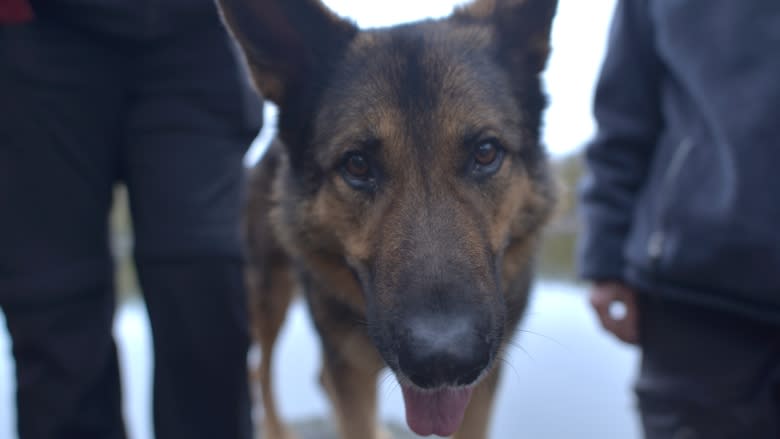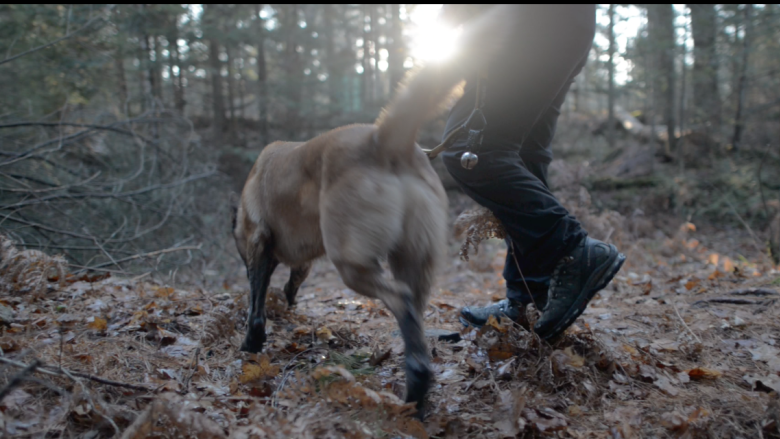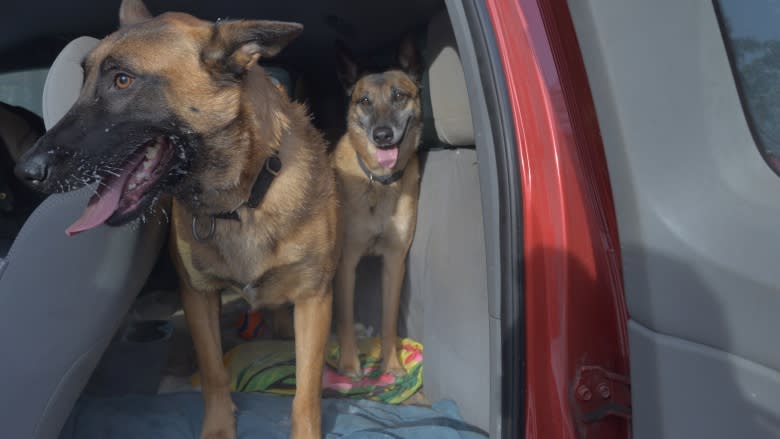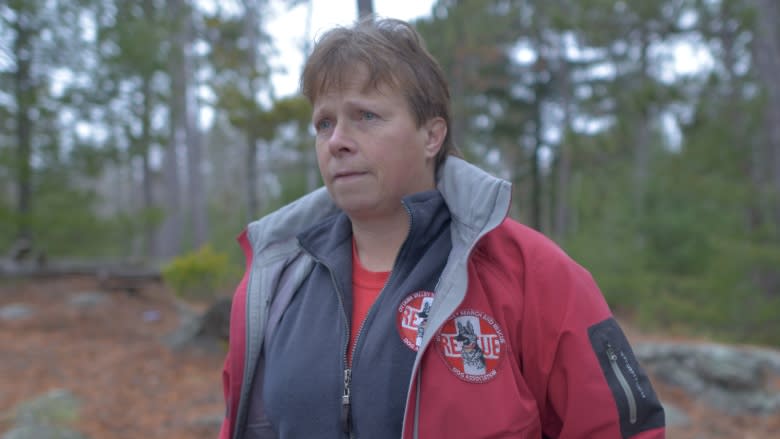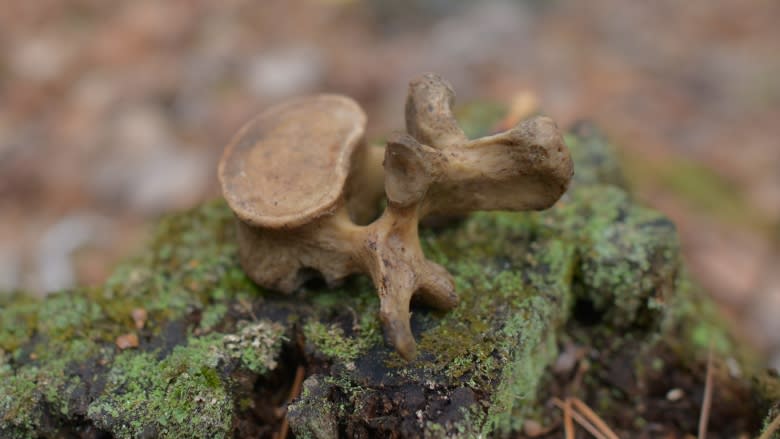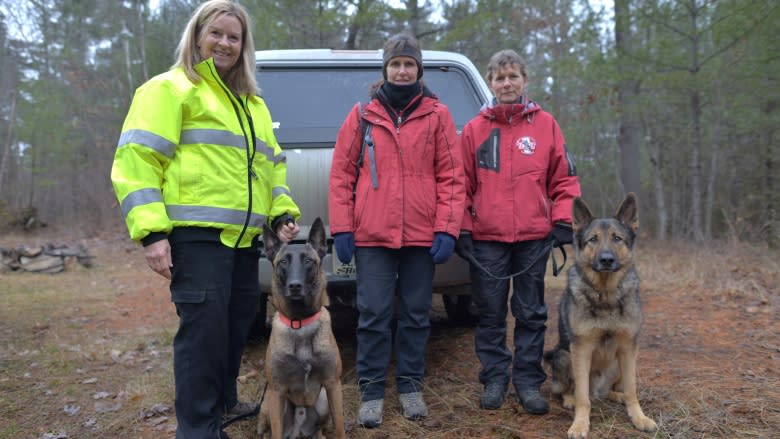What the dog smelled: The science and mystery of cadaver dogs
Dive teams spent 12 days searching the waters of Elliot Lake in northern Ontario and didn't find a thing.
When the cadaver dogs were called in, they needed just 15 minutes.
Six young people had been making their way home from a night of drinking on an island when their overloaded canoe capsized. Everyone made it back to shore, except for 20-year-old Vinnie Yeo.
- Someone Knows Something with David Ridgen: Listen to the full series in order
One of the volunteers called in to help search for the body was Kim Cooper, a founding member of the Ottawa Valley Search and Rescue Dog Association, and the owner of two of the three cadaver dogs on the scene that July day in 1999.
Her Malinois named Piper was perched at the front of a boat as it slowly trolled the search area, sniffing at the water below. Fifteen minutes later, the dog turned to Cooper and let out a series of loud barks
Piper was the second dog to indicate in this spot.
The divers searched the area and found Yeo's backpack. The next day, they found a case of beer that had been in the canoe. The day after that, they found his body.
"It was quite a deep find," Cooper said. "Yet at the same time, the dogs were absolutely positive that they had him."
Not only can these dogs detect the scent of human remains under 30 metres of water, some can also detect traces as small as a shard of bone or drop of blood. They can also tell the difference between, say, a dead raccoon and a dead hiker.
And yet scientists still aren't 100 per cent sure how they do it and the training community is still figuring out how to train them most effectively.
'Body Farm'
"Most think an odour is just made of one chemical, when in reality it is made up of dozens or hundreds of chemicals," said Arpad Vass, a research scientist at the Oak Ridge National Laboratory in Tennessee.
Vass is a leading expert on decomposition odour analysis, and conducts his studies at the University of Tennessee's "Body Farm" — a research facility where human bodies are allowed to decompose in a variety of settings.
He still isn't completely sure why dogs are able to track decomposition scents so effectively. But in a recent paper he narrowed it down to a few organic compounds unique to humans that may offer possible explanations.
Mapping the hundreds of unique odours of human decomposition in all its stages could help with cadaver dog training and may even allow technology to replace cadaver dogs one day.
"The problem is only one of sensitivity," Vass said. "Canines, I'm pretty sure, are in the parts per trillion detection range and instruments are only reliable down to parts per billion."
Small number make the grade
Potential cadaver dogs start their training as young as eight weeks old and are usually certified at around two years old.
Breed isn't overly important. The dogs just need to be very energetic and very motivated to work for a reward. However, typical cadaver dog breeds are German shepherds, Malinois and Labrador retrievers.
Only fifteen dogs have qualified to work with the Ottawa Valley Search and Rescue Dog Association in the past 25 years.
Kim Cooper has personally trained five of them.
The most important part of the training is to expose the dogs to as many human remains as possible.
Cooper said human bones can be ordered off the internet from companies with names like Skulls Unlimited and The Bone Room. She occasionally gets access to the surface, be it a piece of carpet or some dirt, for example, on which a body was found.
But the most common training aid is placenta, donated by new moms.
"I'm in the habit of congratulating family members and in the second sentence saying, 'So, what are you doing with your placenta?" said Cooper, who has a few placentas in her freezer at home.
She said a handler will train a dog with the same odour source for approximately six months so the dog learns the subtle changes that take place during decomposition.
"It takes a little while to build up a solid stomach, so that you don't get too disgusted with what you're hauling around anymore," she said.
The pig problem
Mary Cablk of the Desert Research Institute in Reno, Nev., is in the unique position of being both a scientist and a cadaver dog trainer.
She conducted a study on the compounds of human decomposition compared to those of cows, pigs and chickens.
The smell of decomposing pigs was least similar to that of humans, which is a problem for cadaver dog trainers in the U.K., where it's illegal to possess human remains.
They'd been using pigs as training aids for years. But as Cablk points out, "If you have a dog trained on pigs, then you have a dog trained to find dead pigs."
Double blind
Such discoveries have played an important part in the ongoing professionalization of cadaver dog testing and training.
In 2011, Lisa Lit, a researcher at the University of California, Davis, found that what a handler already knows can affect the outcome of their dog's search.
The study was done using dogs trained to find drugs and explosives, but Cablk says the findings divided the cadaver dog community.
If handlers weren't using blind testing (where the handler doesn't know the location of the target scent) or double blind testing (where both the handler and test adjudicator don't know the target) then the dogs could simply be picking up on unconscious cues from the handler, not the scent itself.
"It's one of those things that, to a scientist, it makes perfect sense," Cablk said. "But dog handlers are not scientists."
Over the past five years, training bodies across North America have developed a more scientific approach to training and certification.
Piece of skull
In June, Kim Cooper took her cadaver dogs Breeze and Grief to Massachusetts to get re-certified with the North American Police Work Dog Association.
"We were very excited this year because one of the [training] aids was a piece of skull, so we got to work on a human skull," she said.
"Something new to put into our list of things that we've done."

